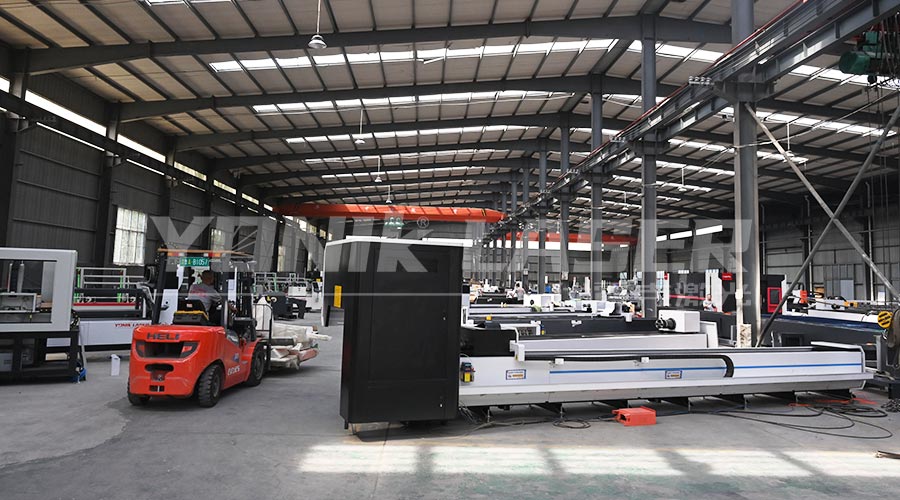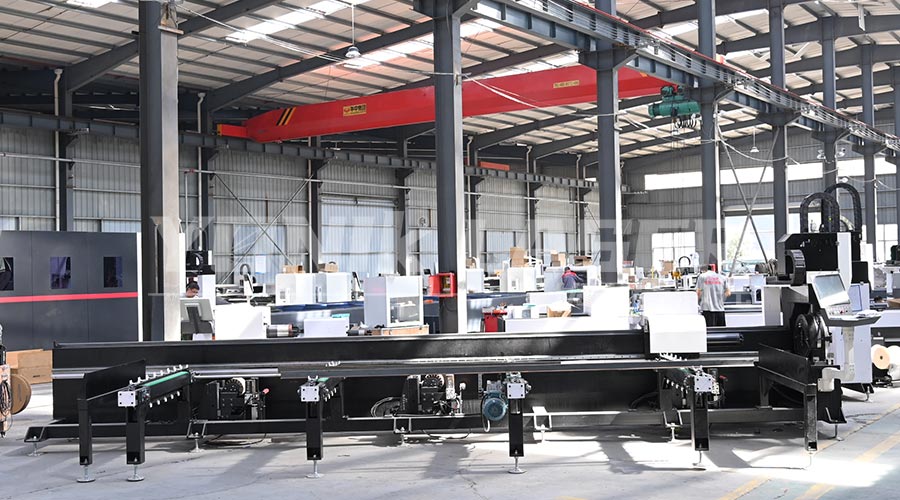In the second-hand laser cutting machine market, the use time is an important indicator to measure the value of the equipment. However, some unscrupulous merchants use technical means to tamper with the equipment operation data and refurbish key components, disguising high-loss equipment that actually works for more than 8,000 hours as "quasi-new machines". This article reveals the renovation routines of second-hand laser cutting machines, provides professional machine inspection skills, and helps buyers avoid trading traps.

1. Three core means of tampering with the use time
1. Clear the control system data
Enter the engineering mode by cracking the device password and directly modify:
Total operating time counter (usually stored in the PLC or motion control card)
Laser ignition number record (CO2 laser tube life is about 20 million times)
Cutting mileage statistics (normal equipment annual cutting length is about 50-80 kilometers)
2. Core component replacement disguise
Replace the laser tube shell but keep the aged quartz glass layer
Use the auxiliary factory guide slider to apply the original factory code
Cover the forged factory date on the servo motor nameplate
3. Deep cleaning of software logs
Delete maintenance alarm records (focus on lens replacement, laser power attenuation and other logs)
Re-flash customized operating system to hide fault codes
Forge laser energy calibration curve data
Two, five-step professional machine inspection method
Step 1: Laser power attenuation detection
Use laser power meter to measure output energy (requires professional equipment):
4000W fiber laser measured power < 15% of nominal value is considered severe attenuation
CO2 laser high-frequency power supply current fluctuation > 5% indicates electrode aging
Step 2: Mechanical wear traces inspection
Guide rail inspection Test: Use a 0.02mm feeler gauge to check the slider gap, >0.08mm needs to be replaced
Gearbox inspection: Open the observation window to check the color of the lubricating oil, milky white indicates water ingress and oxidation
Drive belt inspection: If cracks appear on the tooth surface or the back is hard, it needs to be replaced
Step 3: In-depth analysis of software data
Retrieve the original PLC log: Check the first power-on time (parameters cannot be modified)
Check the servo motor power-on time (some brands of drivers store independent timing)
Read the cutting head collision counter (be cautious if more than 20 times)
Step 4: Optical system loss Evaluation
Mirror inspection: Use ultraviolet light to irradiate the coating layer. If spot-like peeling occurs, it means that the use exceeds 3000 hours
Focusing mirror test: Mark on the focal length plate. If the focal diameter is greater than 0.12mm, it needs to be replaced
Collimator calibration: Laser spot ellipticity greater than 5% indicates that the lens barrel is deformed
Step 5: Determine the life of electrical components
Check the contact wear of the contactor (thickness less than 80% of the original size needs to be replaced)
Check the capacitance (electrolytic capacitor capacitance attenuation greater than 20% should be eliminated)
Measure the on-resistance of the IGBT module (>30% of the initial value has hidden dangers)
III. Six physical characteristics of refurbished machines
Difference between the old and new shells: The dust inside the control cabinet does not match the cleanliness of the shell
Traces of screw disassembly: Paint peeling or scratches on the screws fixing key components
Abnormal cable color: Wires with obvious differences between the old and new appear in the same bundle
Multi-layer label coverage: The original information covered can be vaguely seen under the nameplate
Software version confusion: The release date of the control system and the driver firmware differ by more than 3 years
Contradictory batches of consumables: The production date of the laser cooling tube is later than the factory time of the whole machine
IV. Three strategies to avoid risks
1. Professional equipment testing
Carry a handheld vibration analyzer (to detect the resonant frequency of the guide rail)
Use a thermal imager to observe the temperature difference of the laser cooling circuit
Equipped with an industrial endoscope to check the carbon deposit inside the cutting head
2. Data traceability verification
Query the maintenance record from the original manufacturer through the equipment serial number
Check the MAC address of the CNC system motherboard and the factory record
Retrieve the laser energy detection report (the original manufacturer's annual calibration data)
3. Transaction terms guarantee
Require the signing of the "Key Component Life Guarantee Agreement"
Agree to pay the balance after a three-month equipment running-in period
Clearly define the warranty scope of core components such as lasers and cutting heads
V. High cost-effective equipment screening standards
Reasonable use intensity: Annual cutting length of 30-50 kilometers is the best
Original factory maintenance record: Complete quarterly maintenance records are better than "zero fault" equipment
Technology generation selection: Prioritize models within 3 years after discontinuation of production (sufficient spare parts)
Working environment matching: Equipment in coastal areas needs to be checked for salt spray corrosion protection

The actual value of a second-hand laser cutting machine depends on the remaining service life rather than the surface color. It is recommended that buyers hire professional equipment assessors to perform triple certification on the laser, motion system, and control system. Through scientific testing methods and rigorous transaction processes, it is entirely possible to purchase high-quality equipment that meets performance standards at 30%-50% of the price of a new machine. Remember: the natural aging of core components cannot be reversed by refurbishment. Only in-depth inspection of the machine that penetrates the surface of the data can truly ensure investment security.
2025-07-22
2025-07-21
2025-07-19